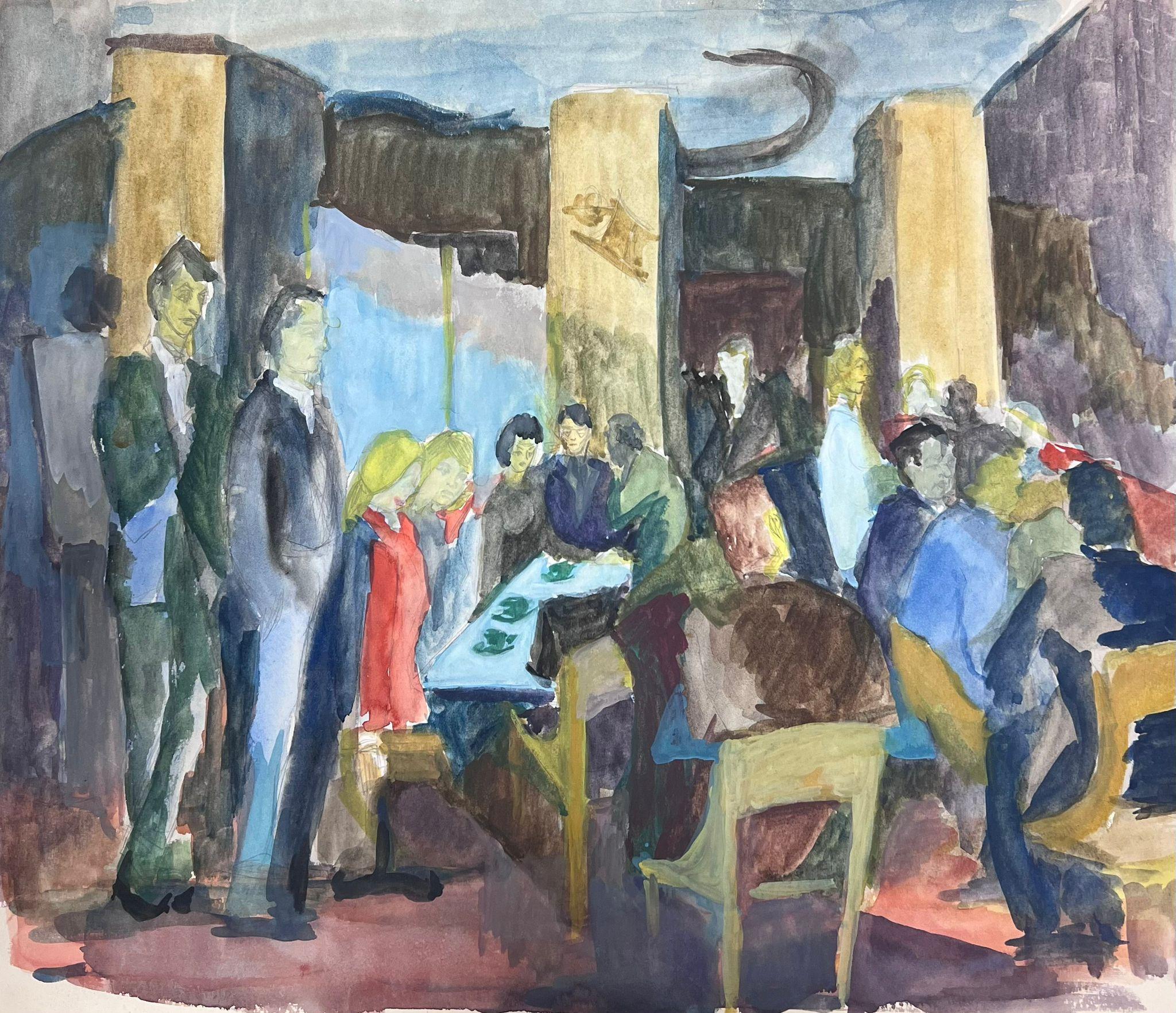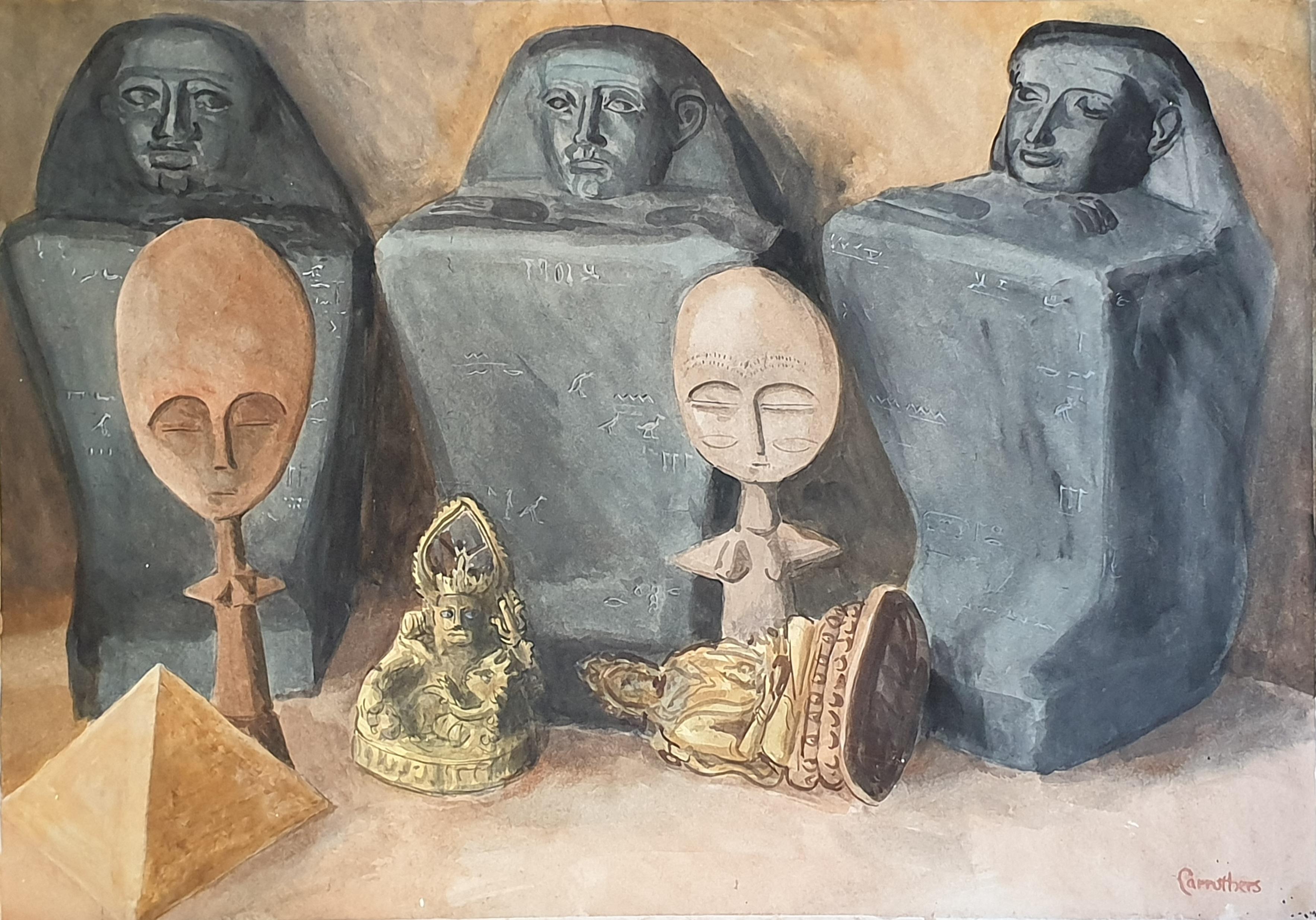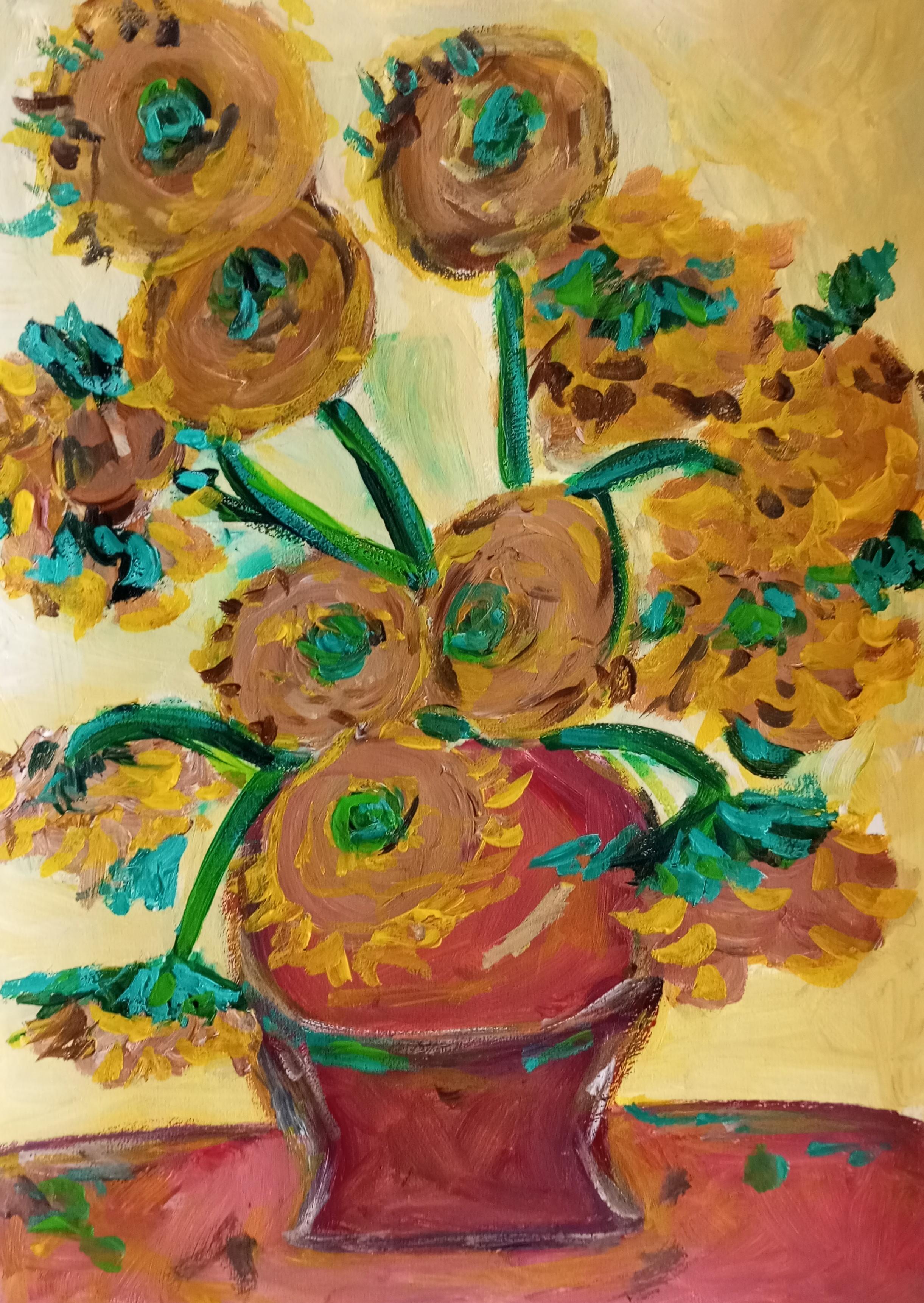Harold Hope ReadHarold Hope Read (1881-1959) - Framed Pen and Ink Drawing, Society Nightlife
About the Item
- Creator:Harold Hope Read (1881 - 1959, British)
- Dimensions:Height: 17.37 in (44.1 cm)Width: 21.42 in (54.4 cm)
- Medium:
- Movement & Style:
- Period:
- Condition:
- Gallery Location:Corsham, GB
- Reference Number:Seller: kj4131stDibs: LU88133301653
Harold Hope Read
Harold Hope Read was born in Greenwich in 1881 and later lived in Lewisham in London, Brighton and Tunbridge Wells, where he passed away in 1959. During his years in Tunbridge Wells, where he moved to in the 1930s, Hope Read lived an avant-garde lifestyle with his live-in housekeeper, life model and mistress, who we know only as Hilda. Here the artist became known as the Bohemian of Tunbridge Wells and his work is now acknowledged as the precursor of Edward Ardizzone (1900–79). It is from Hilda, that the present collection of works originates, after being passed down through Hilda's family after her death. Hope Read’s involvement with his patron, Charles Lambert Rutherston and fellow artists William Orpen (1878–1931) and Sir William Rothenstein (1872–1945) has been credited for inspiring the series of paintings and drawings he titled High Life. In this series, Hope Read depicts the wealthy and famous clientele of his colleagues in a lavishly detailed drawing style. Through this style, he conveyed the opulence of the members of high-society he encountered, including their luxurious costumes and grand interiors. Hope Read regularly submitted works to the Royal Academy's Annual Exhibition and exhibited works at the Alpine Gallery, the New English Art Club, the Royal Institute of Painters in Watercolours and the National Society of British Artists.
- ShippingRetrieving quote...Ships From: Corsham, United Kingdom
- Return PolicyA return for this item may be initiated within 30 days of delivery.
- Leila K Williamson (fl.1884-1919) - Framed Watercolour, Leaving ChurchLocated in Corsham, GBA delightful early 20th century watercolour depicting a group of local children leaving church after attending Sunday school. The watercolour has been signed by the artist to the low...Category
Early 20th Century Figurative Drawings and Watercolors
MaterialsWatercolor
- Horace Hammond (1842-1926) - Framed Watercolour, Shepard at the GateLocated in Corsham, GBA delightful rural scene by the British artist Horace Hammond (1842-1926). Well-presented in an ornate gilt-effect frame with swept rails and internal slip. Inscribed H. Hammond to t...Category
Early 20th Century Figurative Drawings and Watercolors
MaterialsWatercolor
- Attrib. Richard Henry Fuller (1822-1871) - 19th Century Watercolour, St AubinBy Richard Henry FullerLocated in Corsham, GBA very fine watercolour study of St Aubin's harbour in Jersey. Attributed to the artist Richard Henry Fuller due to the similar subject matter and...Category
19th Century Figurative Drawings and Watercolors
MaterialsWatercolor
- Mervyn Grist - Contemporary Watercolour, Blowing in the WindLocated in Corsham, GBA fun, colourful watercolour study of a couple standing amidst lines of washing, The patterned textiles flutter in the wind as the woman, with a laundry basket in hand, holds the woo...Category
21st Century and Contemporary Figurative Drawings and Watercolors
MaterialsWatercolor
- 19th Century Watercolour - Rest on the flight to EgyptLocated in Corsham, GBA charming watercolour depiction of the Holy family's flight to Egypt. They stop to rest beneath a tree with an infant St. John the Baptist to the right of the composition. Unsigned....Category
19th Century Figurative Drawings and Watercolors
MaterialsWatercolor
- K.K - Framed Mid 19th Century Watercolour, View Over the EstuaryBy K.K.Located in Corsham, GBA picturesque coastal watercolour of a view over a Devonshire estuary, with figures. Initialled K.K and dated to the lower right hand corner. Well presented in a gilt effect frame an...Category
Mid-19th Century Figurative Drawings and Watercolors
MaterialsWatercolor
- Vielle Femme en Petite CapeBy Jacques VillonLocated in Milwaukee, WISigned with stamp, J.V. 7-5/8" x 4-3/4" art 19" x 15-1/4" frame Jacques Villon (French, 1875 - 1963) French painter, printmaker and illustrator. The oldest of three brothers who became major 20th-century artists, including Raymond Duchamp-Villon and Marcel Duchamp, he learnt engraving at the age of 16 from his maternal grandfather, Emile-Frédéric Nicolle (1830-94), a ship-broker who was also a much appreciated amateur artist. In January 1894, having completed his studies at the Lycée Corneille in Rouen, he was sent to study at the Faculty of Law of the University of Paris, but within a year he was devoting most of his time to art, already contributing lithographs to Parisian illustrated newspapers such as Assiette au beurre. At this time he chose his pseudonym: Jack (subsequently Jacques) in homage to Alphonse Daudet’s novel Jack (1876) and Villon in appreciation of the 15th-century French poet François Villon...Category
Early 1900s Impressionist Figurative Paintings
MaterialsIndia Ink, Gouache
- Sea Battle - (Stories from the Edda)By Arthur RackhamLocated in Miami, FLSigned, "A Rackham" lower right Sotheby's New York - The work has recently been elegantly framed with a high end frame and archivalled matted and looks wonderful in person. Arth...Category
Early 1900s Impressionist Figurative Drawings and Watercolors
MaterialsWatercolor, India Ink, Gouache
- The Abduction of the Sabine Women , a Renaissance drawing by Biagio PupiniLocated in PARIS, FRThis vigorous drawing has long been attributed to Polidoro da Caravaggio: The Abduction of the Sabine Women is one of the scenes that Polidoro depicted between 1525 and 1527 on the façade of the Milesi Palazzo in Rome. However, the proximity to another drawing inspired by this same façade, kept at the Ecole des Beaux-Arts, and to other drawings inspired by Polidoro kept at the Musée du Louvre, leads us to propose an attribution to Biagio Pupini, a Bolognese artist whose life remains barely known, despite the abundant number of drawings attributed to him. 1. Biagio Pupini, a Bolognese artist in the light of the Roman Renaissance The early life of Biagio Pupini, an important figure of the first half of the Cinquecento in Bologna - Vasari mentions him several times - is still poorly known. Neither his date of birth (probably around 1490-1495) nor his training are known. He is said to have been a pupil of Francesco Francia (1450 - 1517) and his name appears for the first time in 1511 in a contract with the painter Bagnacavallo (c. 1484 - 1542) for the frescoes of a church in Faenza. He then collaborated with Girolamo da Carpi, at San Michele in Bosco and at the villa of Belriguardo. He must have gone to Rome for the first time with Bagnacavallo between 1511 and 1519. There he discovered the art of Raphael, with whom he might have worked, and that of Polidoro da Caravaggio. This first visit, and those that followed, were the occasion for an intense study of ancient and modern art, as illustrated by his abundant graphic production. Polidoro da Caravaggio had a particular influence on the technique adopted by Pupini. Executed on coloured paper, his drawings generally combine pen, brown ink and wash with abundant highlights of white gouache, as in the drawing presented here. 2. The Abduction of the Sabine Women Our drawing is an adaptation of a fresco painted between 1525 and 1527 by Polidoro da Caravaggio on the façade of the Milesi Palace in Rome. These painted façades were very famous from the moment they were painted and inspired many artists during their stay in Rome. These frescoes are now very deteriorated and difficult to see, as the palace is in a rather narrow street. The episode of the abduction of the Sabine women (which appears in the centre of the photo above) is a historical theme that goes back to the origins of Rome and is recounted both by Titus Livius (Ab Urbe condita I,13), by Ovid (Fasti III, 199-228) and by Plutarch (II, Romulus 14-19). After killing his twin brother Romus, Romulus populates the city of Rome by opening it up to refugees and brigands and finds himself with an excess of men. Because of their reputation, none of the inhabitants of the neighbouring cities want to give them their daughters in marriage. The Romans then decide to invite their Sabine neighbours to a great feast during which they slaughter the Sabines and kidnap their daughters. The engraving made by Giovanni Battista Gallestruzzi (1618 - 1677) around 1656-1658 gives us a good understanding of the Polidoro fresco, allowing us to see how Biagio Pupini reworked the scene to extract this dynamic group. With a remarkable economy of means, Biagio Pupini takes over the left-hand side of the fresco and depicts in a very dense space two main groups, each consisting of a Roman and a Sabine, completed by a group of three soldiers in the background (which seems to differ quite significantly from Polidoro's composition). The balance of the drawing is based on a very strongly structured composition. The drawing is organised around a median vertical axis, which runs along both the elbow of the kidnapped Sabine on the left and the foot of her captor, and the two main diagonals, reinforced by four secondary diagonals. This diamond-shaped structure creates an extremely dynamic space, in which centripetal movements (the legs of the Sabine on the right, the arm of the soldier on the back at the top right) and centrifugal movements (the arm of the kidnapper on the left and the legs of the Sabine he is carrying away, the arm of the Sabine on the right) oppose each other, giving the drawing the appearance of a whirlpool around a central point of support situated slightly to the left of the navel of the kidnapper on the right. 3. Polidoro da Caravaggio, and the decorations of Roman palaces Polidoro da Caravaggio was a paradoxical artist who entered Raphael's (1483 - 1520) workshop at a very young age, when he oversaw the Lodges in the Vatican. Most of his Roman work, which was the peak of his career, has disappeared, as he specialised in facade painting, and yet these paintings, which are eminently visible in urban spaces, have influenced generations of artists who copied them abundantly during their visits to Rome. Polidoro Caldara was born in Caravaggio around 1495-1500 (the birthplace of Michelangelo Merisi, known as Caravaggio, who was born there in 1571), some forty kilometres east of Milan. According to Vasari, he arrived as a mason on the Vatican's construction site and joined Raphael's workshop around 1517 (at the age of eighteen according to Vasari). This integration would have allowed Polidoro to work not only on the frescoes of the Lodges, but also on some of the frescoes of the Chambers, as well as on the flat of Cardinal Bibiena in the Vatican. After Raphael's death in 1520, Polidoro worked first with Perin del Vaga before joining forces with Maturino of Florence (1490 - 1528), whom he had also known in Raphael's workshop. Together they specialised in the painting of palace façades. They were to produce some forty façades decorated with grisaille paintings imitating antique bas-reliefs. The Sack of Rome in 1527, during which his friend Maturino was killed, led Polidoro to flee first to Naples (where he had already stayed in 1523), then to Messina. It was while he was preparing his return to the peninsula that he was murdered by one of his assistants, Tonno Calabrese, in 1543. In his Vite, Vasari celebrated Polidoro as the greatest façade decorator of his time, noting that "there is no flat, palace, garden or villa in Rome that does not contain a work by Polidoro". Polidoro's facade decorations, most of which have disappeared as they were displayed in the open air, constitute the most important lost chapter of Roman art of the Cinquecento. The few surviving drawings of the painter can, however, give an idea of the original appearance of his murals and show that he was an artist of remarkable and highly original genius. 4. The façade of the Milesi Palace Giovanni Antonio Milesi, who commissioned this palace, located not far from the Tiber, north of Piazza Navona, was a native of the Bergamo area, like Polidoro, with whom he maintained close friendly ties. Executed in the last years before the Sack of Rome, around 1526-1527, the decoration of Palazzo Milesi is considered Polidoro's greatest decorative success. An engraving by Ernesto Maccari made at the end of the nineteenth century allows us to understand the general balance of this façade, which was still well preserved at the time. The frescoes were not entirely monochrome, but alternated elements in chiaroscuro simulating marble bas-reliefs and those in ochre simulating bronze and gold vases...Category
16th Century Old Masters Figurative Drawings and Watercolors
MaterialsInk, Gouache, Pen
- Deeda Blair at Home, Watercolor portraitBy Manuel SantelicesLocated in Miami Beach, FLDeeda Blair at Home, by Manuel Santelices Ink pen and watercolor on paper Image size: 12 in. H x 9 in. W Unframed 2023 The worlds of fashion, society, and pop culture are explored ...Category
21st Century and Contemporary Contemporary Figurative Drawings and Water...
MaterialsPen, Watercolor, Ink, Paper
- Sonia Spider Quenell, Watercolor portrait on archive paper.By Manuel SantelicesLocated in Miami Beach, FLSonia "Spider" Quenell by Manuel Santelices Ink pen, watercolor, and gouache Image size: 11" x 14" Unframed 2022 Manuel Santelices explores the world of fashion, society, and pop c...Category
21st Century and Contemporary Contemporary Figurative Drawings and Water...
MaterialsInk, Paper, Watercolor, Gouache, Pen
- "Children" Little girl, child, red, blue, reading cm. 31 x 24 1980By Olga BOGAEVSKAJALocated in Torino, ITLittle girl, child, red, blue, reading we send the work anywhere Shipping included OLGA BOGAEVSKAJA (Moscow, 1916 – St. Petersburg, 2000) Works by Olga Bogaevskaja can be found in v...Category
1980s Impressionist Figurative Drawings and Watercolors
MaterialsWatercolor





